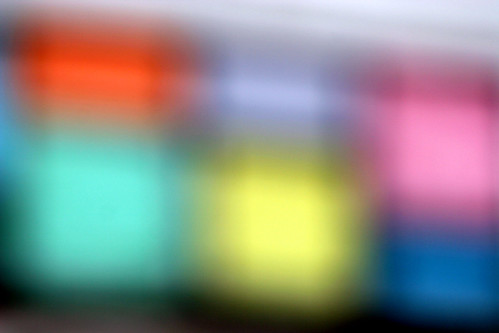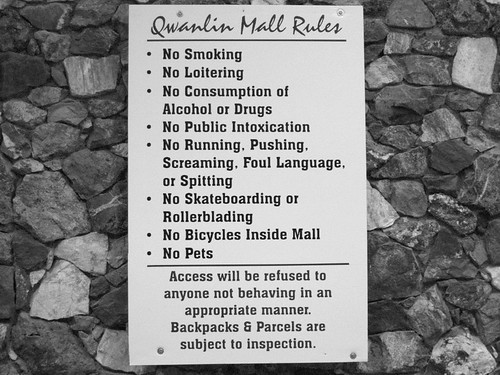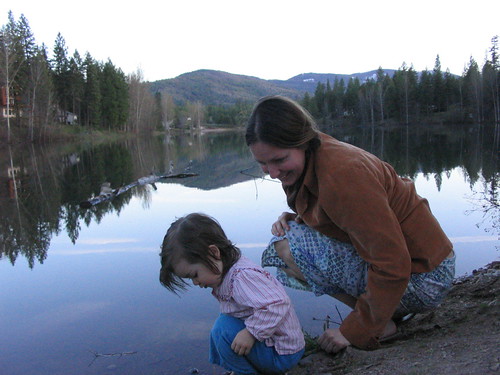
Saturday, April 29, 2006
The unfocus group

Read about the idea of an unfocus group in an interesting article about the design company IDEO and their 'METHODCARDS'. The thought is that early on in a project in a new category you assemble a motley crew of experts and evangelists to give you ways of thinking about it rather than gather a group of likeminded people as you traditionally might.
curry at breakfast?
 It's good to talk. But when to talk depends on what the issue is and what their mindset is = 'behavioural media planning' .
It's good to talk. But when to talk depends on what the issue is and what their mindset is = 'behavioural media planning' .You've just eaten breakfast and your partners says, "wanna go for a curry tonight?" and you cannot even begin to stomach thinking about spicy food, even though, when the time's right, there's nothing better.
Comapre unsolicited sales calls versus Google classified ads - uninsightful, intrusive and untimely versus on demand, welcomed and tailored.
how to plan creativity
 from Creativity at Work: A Leadership Guide
from Creativity at Work: A Leadership Guide The modern research about creativity is enormous. Social scientists from a variety of disciplines have been writing about the subject for more than fifty years. What does this research tell us? One of the richest veins provides a long list of factors that enable creativity within the workplace. They can be grouped into the ten categories discussed below.
Enablers of Creativity
- Intellectual Diversity. The workforce contains an adequate mix of people from different occupations, interests, skills, backgrounds, experiences and personalities.
- Vibrant, Wide-reaching Interaction. Expansive channels of communication expose people to new influences.
- Employee Engagement. People’s personal and professional interests are aligned and complementary systems of reward and recognition are in place.
- A Sphere of Autonomy. Well-understood boundaries separate necessary controls from the latitude required for a person to seize the initiative.
- A Safe Space and Trust. The environment is such that people feel free to express themselves openly and authentically without fear.
- Intellectual Growth Opportunities. Active investments are made to develop the knowledge and skills of the workforce.
- Supportive Managers. Empathetic managers act as catalysts and role models.
- Discretionary Time and Energy. Opportunities are provided to pause and reflect on work and to think of new ideas.
- Organizational Supports. Access to appropriate funding, technology, expertise and other aids is provided.
- Organizational Dynamism. In a changing environment, people are encouraged to continually look for ways to improve.
Godin on Mother's Day

What makes a great brand story ? Mother's Day.
Viral, Creates positive culture, answers a need for givers and receivers alike. Seth Godin Says So.
Soothsayers of the world, unite
 Grant McCracken:
Grant McCracken:"Trend watching: 10 rules
Trend watching is a pressing business. And we now have an increasingly crowded marketplace of suppliers.
In these early days, there are many models and extravagantly different standards. Here are some of the rules with which we can separate the sheep from the goats....
the pleasure of finding things out
Excellent short 40 min documentary interview with Dr. RP Feynman- one of the greatest physicist of our times. Would that he had not wasted his life with Nobel prizes and reinventing how we see the universe, he would have made a great planner (or creative generalist)
A few choice items from his CV :
In Surely You're Joking, Mr. Feynman!, he gives advice on the best way to pick up a girl in a hostess bar and drew artwork for a massage parlor. He used a nude/topless bar as an office away from the office, making sketches or writing physics equations on paper placemats.
Feynman was requested to serve on the presidential Rogers Commission which investigated the Challenger disaster of 1986. - and he worked out why of course.
He was a mean bongo player, notorious practical joker, and decipherer of Mayan hieroglyphics
Thursday, April 27, 2006
ZAG

BBH have expanded their ideas empire in some interesting ways over the years. Music has a special place in the BBH canon (think Levis) something, 2003's LEAP music venture confirmed.
ZAG is the agency's new limb that will focus on product development. have always wondered whether agencies would extend further into the creation of new brands, but new products? Perhaps Zag will be housed in a massive garden shed and be popluated with dads and uncles pottering around with wire, a glass of port and a transistor radio.
Sunday, April 23, 2006
Seizing the Channels

Consumers are taking over media channels that were previously one-way dictates from big business or government.
Check at this hyperthetical competition : "what image you like to see on a US stamp?"
The subversive ones are the best, of course.
(Canada Post already allows you to personalise your stamps, see here.)
Second Life

What is Second Life?
Simply mindblowing VR. Where will all this go? The On demand life lived out in a virtual world. The interactions between first and second life are astonishing.
Take money,

A virtual world with a virtual currency that has a legitimate value to the $US - "In 2006, there's a good chance $100 million USD dollars worth of transactions will flow through the virtual world of Second Life." See here
Beyond physicality as we know it: SL is uniting the like-minded or bodied that cannot easily exisit in our world - wheelchair users from around the globe connect in their own community ( and enjoy able body life if desired in their private uptopias)
Subversive Knitting

Knitting has become subversive, "in". Clandestine clickers creating knitting boutiques on the fringes of boho 'hoods. Toronto is the epicentre of drop stitch cool, see here
Now guerilla Knitting is transforming public space with disruptive yarn, ironically tagging objects to make a rather twee kind of graffiti (see here and pic)
Perhaps it's the circle of cool turning. ("Circle of Cool Theory" is Eddie Izzard's axis for plotting cool things to uncool things, the idea being it is not linear but circular and the line between 'unfathomably unhip' and 'so trendy it hurts' is miniscule. Just think how 70s geek chic went from bad to good in one fickle revolution from not to hot)

Part of the nexus of 21st century knitting must be a nostalgic backlash against the irrepressible rise of technology, an individualistic want to create beyond cooker-cutter manufacturing that extends to identity-making.
Anyhoo, subversive knitting reminds me of this great Gondry video:
Saturday, April 22, 2006
You are now a TV station

Free access to on demand content through Web 2.0 gadgeteering means you are your own media centre, your own tv network choosing the schedule according to your whim. The folksonomy of an ever social web means you'll be recommending content, narrowcasting to peers and beyond.
Who will supply your content?
Status Anxiety

Status anxiety, it is suggested, is more common than ever in today's wealthy western societies because there is so much more to envy. "A sharp decline in actual deprivation may - paradoxically - have been accompanied by a continuing and even increased sense of deprivation and a fear of it,"
The more access we have to material goods, the more our expectations grow - someone somewhere is having a better, more exclsuive experience. Remember that Frazier episode in the healthclub?
Ref: Alain de Botton, see here
Sunday, April 16, 2006
Pampered Campers

Just as we get wind of luxury brands like Armani extending the brand experience into fittingly upscale hotels we learn even that those who want to get closer to nature expect LED-lit tents and, presumably, diamond encrusted portaloos...
On your bike, son

The future of big city commuting = many people on two-wheels whizzing down a long plastic tube?
Read all about it here
Links








